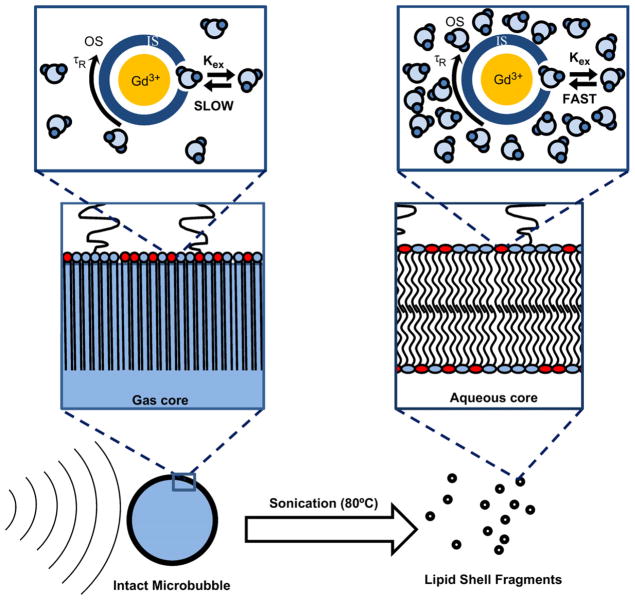Fig. 8.
Cartoon showing proposed mechanism for MRI relaxivity increase with the cavitation-induced conversion of lipid from the compressed monolayer form on the intact microbubble to the relaxed bilayer form of the fragments. The lipid molecular area and hydrocarbon membrane thickness are estimated to be 0.32 nm2 and 2.2 nm for the condensed monolayer [47,48] and 0.48 nm2 and 2.4 nm for the relaxed, gel-state bilayer [48–51]. The parameters shown in the schematic are the outer hydration shell of the Gd(III) ion, OS; the inner hydration shell, IS; the molecular tumbling time, τR; and the proton exchange rate from the OS to the IS, kex. It is proposed that the ability of the Gd(III) ion to relax bulk water protons, i.e., the value of kex, increases as the lipid area increases during the monolayer-to-bilayer transition.

